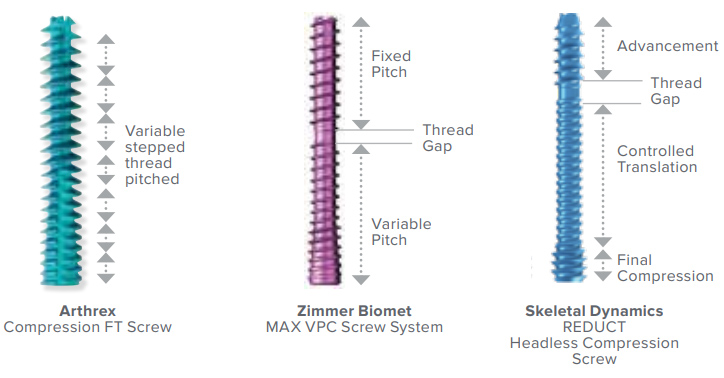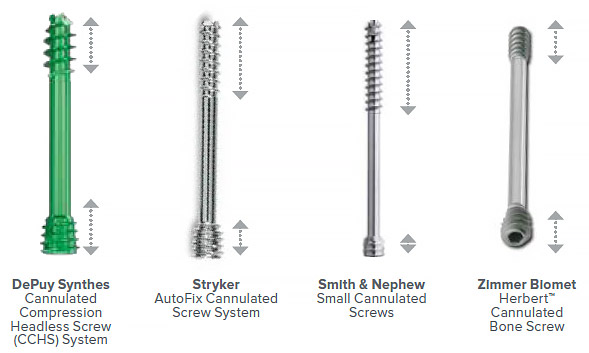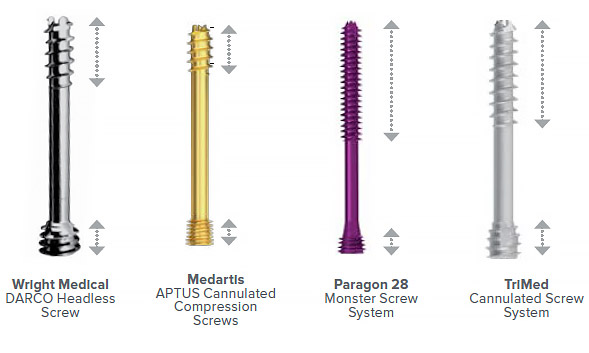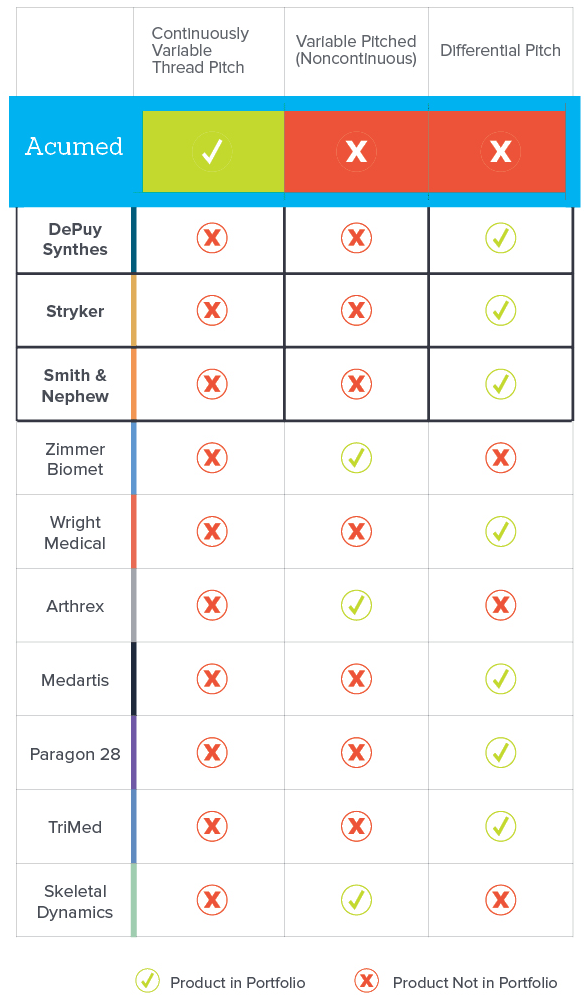Acutrak vs. the Competition
Not All Headless Compression Screws are Alike

Continuously Variable
Thread Pitch
The first and only continuously variable thread pitched headless screw currently on the market.
Variable Pitch (Noncontinuous)
Noncontinuously variable thread pitched designs consist of variable stepped-pitch and fixed-pitch designs in specified zones. With each step or thread pitch change, compression also changes.

Differential Pitch
Differential, Herbert-style screws provide compression primarily when the proximal threads interact with the bone cortex.


A Larger Window of Compression
Fracture Location Flexibility
The location and pitch of each screw thread determines the rate of compression across a fracture site. As the pitch changes, the rate of compression changes, especially when screw pitch varies on either side of a fracture. Noncontinuously pitched screws, with gaps or "steps" between thread patterns, will not have continuous compression.
Some noncontinuous pitch screws can function like differential pitch screws. Compression primarily occurs when the tail of the screw enters the near cortex or when the variable pitched threads enter the fracture site. This presents the surgical challenge of location sensitivity in relation to the fracture site.
The continuously variable thread pitch design of the Acutrak screws allows for gradual, consistent compression along the entire length of the screw. This means the fracture can lie almost anywhere along the length of the screw. This unique feature directly addresses surgical challenges of location sensitivity, allowing greater flexibility in relation to the fracture site.
- Wheeler DL, McLoughlin SW. Biomechanical assessment of compression screws. Clin Orthop Rel Re 1998;350;237-245.
- Competitor data on file with Acumed.



